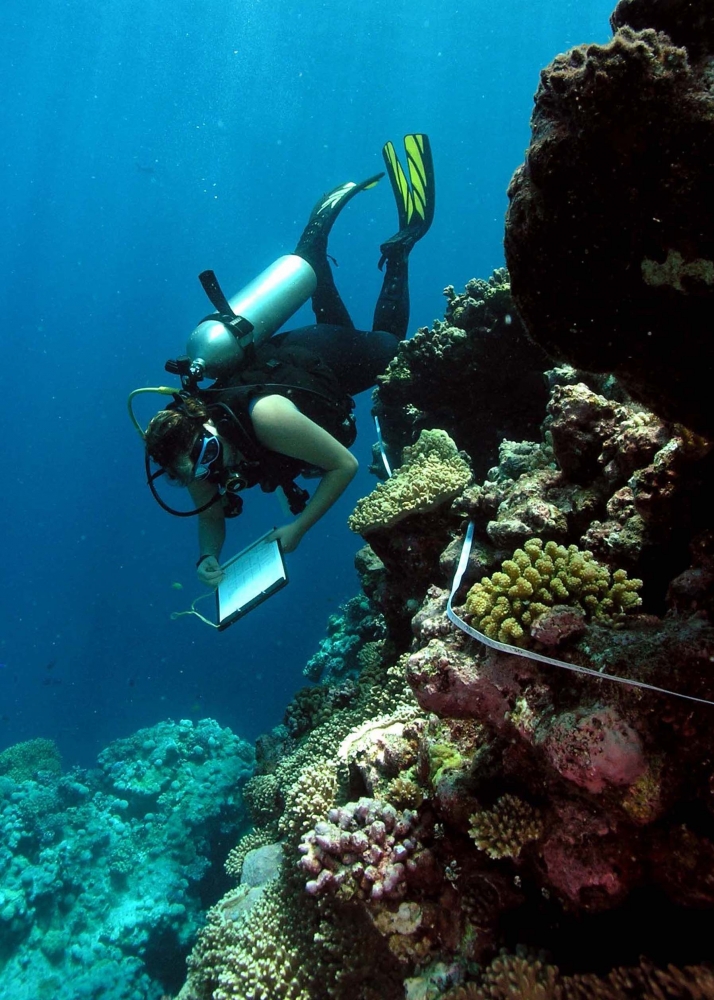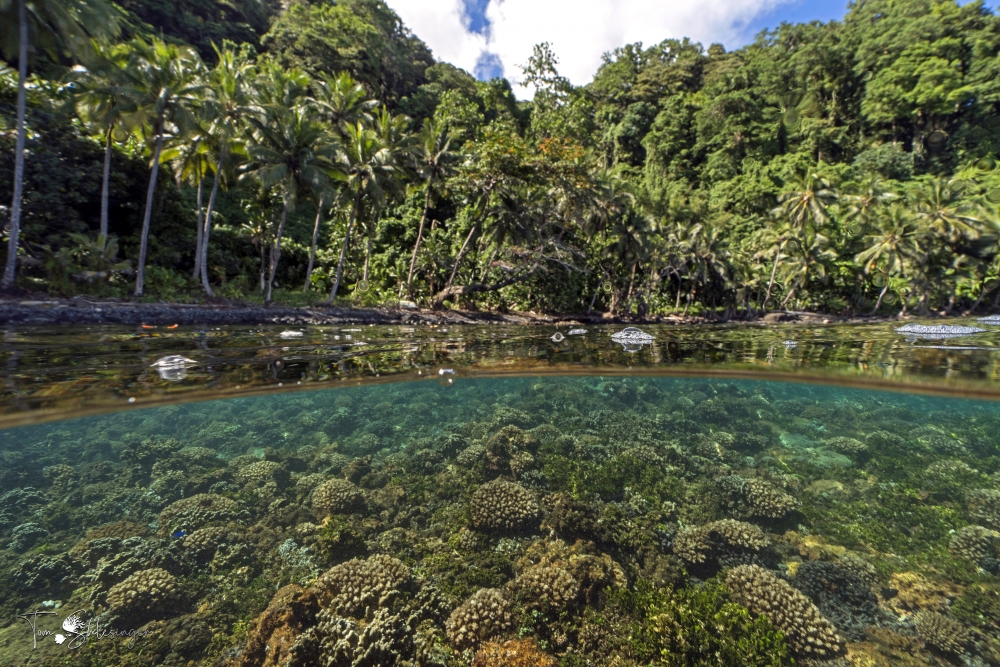Starting Local


Corals are in trouble. All across the globe the diverse and dynamic ecosystems are taking huge hits year after year. The Great Barrier Reef has lost half of its coral since 1995. Scientists are seeing similar declines in reefs from Hawai‘i to the Florida Keys and across the Indo-Pacific region.
The widespread decline is fueled in part by climate-driven heatwaves that induce coral bleaching — the breakdown of the relationship between shallow-water coral and the symbiotic algae they rely upon for nutrients.
Climate change is a clear and present danger to the persistence of coral reefs, and global reductions in carbon emissions is critical for the future of reefs. But according to a new study published in the journal Science, managing local environmental conditions can help give coral a fighting chance.
“Some have argued that climate change is so overwhelming that conserving coral reefs on a local scale is futile,” said lead author Mary Donovan, a former postdoctoral researcher at UC Santa Barbara, now an assistant professor at Arizona State University. “But our study found that local impacts on coral reefs magnified the effects of climate-driven heatwaves. This suggests that local action to conserve coral reefs can help reefs withstand the effects of climate change.”
Scientists and trained community members have collected data from 223 sites across the world on behalf of Reef Check, a non-profit organization that promotes reef stewardship through citizen science initiatives. Donovan and her colleagues analyzed local data collected during and after climate-driven bleaching events to determine the health of reefs.

An EcoDiver searches for invertebrates on the Great Barrier Reef
Photo Credit: REEF CHECK AUSTRALIA
The researchers found that local factors could exacerbate coral loss in the year following bleaching. The presence of macroalgae, or seaweeds, was particularly associated with coral mortality, the researchers noted. Reefs with more macroalgae experienced up to 10 times more coral die-off, even at similar levels of heat stress, they found. And the effect increased at higher temperatures.
In addition to competing with coral for space on the reef, just the presence of macroalgae can change the water chemistry in ways that make coral more susceptible to bleaching, explained coauthor Deron Burkepile, a professor in UC Santa Barbara’s Department of Ecology, Evolution, and Marine Biology. These changes can also make coral more vulnerable to disease, as can elevated temperatures. The two factors in concert could give coral a one-two punch.
“When we think about the impact of these big marine heatwaves, we often think it’s all about the heat,” Burkepile said. “We don’t think about the local biotic interactions as much.
“But these local interactions matter,” he continued, “and it’s the local interactions that we can manage in a relatively effective way.”
The abundance of macroalgae is highly receptive to local dynamics like overfishing and nutrient pollution. Overfishing depletes the number of fish that eat algae and keep the reef’s ecosystem in balance. Meanwhile, nutrient pollution from land — including runoff from golf courses, agriculture and coastal development — threaten reefs by fostering the growth of algae, in addition to other threats to reefs such as disrupting coral microbiomes.
These issues can even allow algae to dominate over coral. And once that occurs, it can be challenging to restore the ecosystem to the way it was, according to a previous study out of UC Santa Barbara.

Coral reefs like this one in Papua New Guinea are at risk of bleaching. Fortunately, local management, alongside global efforts to mitigate climate change, can help coral reefs survive.
Photo Credit: TOM SHLESINGER
The importance of local conditions to reef survival in relation to the overwhelming effects of marine heatwaves is often dismissed, the authors argue, and can instill a sense of hopelessness in scientists, conservationists and those who rely on reefs for their livelihoods. However, local factors offer opportunities for management that could boost coral reefs’ resistance to climate change, according to Burkepile.
“When we think where most coral reefs are, they’re in parts of the world where the communities can do little about climate change,” he said.
“These results imply that there is something that we all can do,” Donovan added. “There are opportunities for us to take concerted action on climate change as well as local action.”
Traditional fishery management techniques, like bag limits and regulations on gear, could promote the recovery of herbivorous fishes, she suggested, which could help remove macroalgae and help corals survive heat waves. Marine protected areas like the Kahekili Herbivore Fisheries Management Area in Hawai‘i are another tool that communities could employ, as are better wastewater treatment methods that could reduce the nutrient runoff on which the algae thrive.
The researchers intend to continue their work investigating the effects of local conservation strategies on coral reef resilience. For instance, in summer 2022, they plan to remove algae from reefs around the island of Mo’orea, French Polynesia to examine how these removals impact corals’ response to heat waves both as a potential conservation strategy as well as a controlled experiment.
“Coral reefs take up some of the smallest area on our planet, but harbor the most species of any ecosystem on Earth,” Donovan said. “And people all over the world rely on reefs for food security, for coastal protection from storms and for other aspects of their livelihoods. In many parts of the world, it isn’t only a question of beauty, but of survival.” This only underscores the importance of identifying local actions that communities can take to protect and manage the natural resources coral reefs provide.
The research was funded by the National Science Foundation and a grant from the Zegar Family Foundation.





